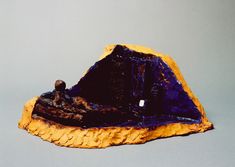Thomas Stimm
Thomas Stimm was born in Vienna, Austria in 1948. He studied from 1969 to 1974 at the Academy of Fine Arts, Vienna with Max Weiler, whose assistant he became from 1974 to 1976. In 1972 he completed a study visit to the Hochschule für Bildende Kunst Hamburg, Germany. In 1987 he received a Philip Morris scholarship, for Berlin. In 1996 he founded the artist community SOYLENT GREEN with Uta Weber. In 2001 Stimm was artist in residence, in Mariposa, on Tenerife, Spain and in 2007 artist in residence, in Istanbul, Turkey. Guest professorships took him to the Hochschule für Künste, Bremen, in 1995, to the Claremont School of Art, Perth, Western Australia, in 1997, and to the Städelschule, Frankfurt am Main, in 2002.
His works are to be found in public spaces in Cologne, Tenerife and Mistelbach, Lower Austria and have been shown in numerous group exhibitions worldwide, including the Lenbachhaus, Munich in 1983, the Museum of Modern Art (MoMA), New York, USA in 1984, the Vienna Secession and the Hessisches Landesmuseum, Darmstadt, Germany; in 1987, the Museum voor Hedendaagse Kunst, Ghent, Belgium; in 1991, the Musee d'Art Contemporain, Lyon, France; in 1993, the Kunsthalle Krems, Austria; in 1998, the Deutsche Guggenheim, Berlin; in 2002 and 2005, the Museum Ludwig Cologne; and in 2006, 2012, and 2013, the Lentos Kunstmuseum, Linz, Austria. His works have been shown repeatedly at the Museum der Moderne Salzburg and the Generali Foundation, in both of whose collections the artist is represented. Solo exhibitions dedicated to him include the Rupertinum in Salzburg in 1994, the Bergen Art Association, Norway in 1995, and the Museum Moderner Kunst Stiftung Ludwig, Vienna (mumok) in 2008. In 2004 Stimm received the Salzburg Ceramics Prize of the Federal Chancellery. Thomas Stimm lives and works in Vienna, Cologne and in Burgau, Bavaria, Germany.
In the 1980s, Thomas Stimm developed an artistic counter-position to the reduced formal language that prevailed in three-dimensional art at the time - beyond the new "wild painting" - characterized by a vegetal, rampant colorfulness. After experiments with papier-mâché, he switched to clay and ceramics in order to be able to produce larger sculptures. In the 1990s, he added the use of aluminum and plastics. The play with the change of the size relation of man and nature runs through his artistic work. He finds motifs in everyday situations of life and leisure, which he scales down like models, and in nature, whose parts he greatly oversizes. Necklaces of pearls, fruits, fragmented pieces of meadows, plants, especially flowers as a visualization of the power of uninhibited growth and their blossoms as symbols of unfolding and opening became characteristic of his work. He sometimes combines his plant sculptures into cheerfully colorful garden ensembles that convey a zest for life. Since the 1990s, he has been working on his own block of works under the title "Terra" (www.terranian.com). Stimm understands "Terra" as a "home in space" for inhabitants of all continents of the earth. He appeals to a planetary consciousness and offers various product lines for an alternative lifestyle in a web store.
read more read less
